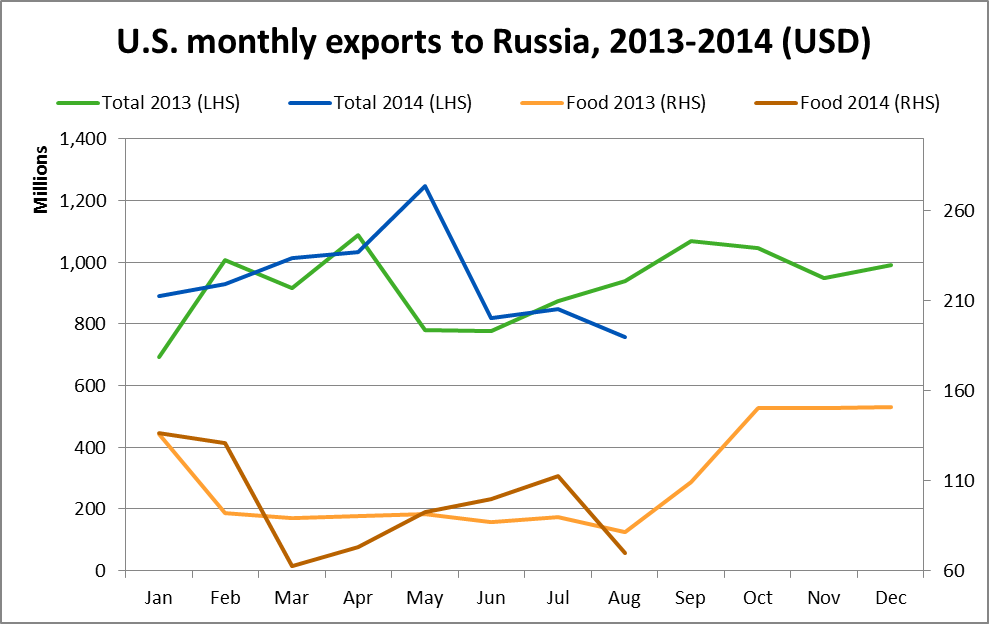The United States has steadily increased the severity of sanctions imposed on Russia since March of this year after Russia annexed Crimea. The first executive orders targeted individuals, primarily Russian officials. Later in July, sanctions were extended to include a handful of Russian energy companies and financial firms. In turn, in early August Russia announced that it would ban imports of fruit, vegetables, meat, fish, milk and dairy from the United States and other Western countries.
Despite such administrative actions, U.S.-Russia trade has not experienced a substantial decline. American imports from Russia dipped slightly in August, yet did not fall below the value from the same month a year ago, prior to sanctions.

Exports slid more, to levels just below those set last year. A decrease in food* exports to Russia contributed to this, but besides items such as frozen chicken, pork and fish, American exports have not suffered significantly from Russia’s embargo.

But with the U.S. furthering the reach of its sanctions in September to include more Russian industries, and with no end in sight to the conflict in the Ukraine, the greatest impact from these accumulating restrictions on U.S.-Russia trade may be yet to come.
*sections 1-4 of the Harmonized System
